The Eastern European country of Poland is a rapidly growing destination for visitors from around the world, with its charming and historic cities that are buzzing with vibrant culture, its plethora of natural scenery, such as stunning wooded areas, expansive lakes, and swooping, rolling hills and mountains, as well as an abundance of enchanting castles that are layered with centuries worth of fascinating and irresistible heritage.
Poland, as a country, dates back to approximately the 10th century, which means that there is truly a multitude of stories attached to each and every castle that stands in the country today, including tales of kings and queens, military battles and conflict, as well as their role in modern-day history, such as the Second World War, which has an enormous impact on the country.
This list will highlight the absolute best, and unmissable castles to visit in Poland, their key points and interest, as well as practical information, such as location, and opening and closing times. If this list does not make you want to book the soonest flight to Poland and uncover the magnitude of history that it has to offer, we don’t know what will!
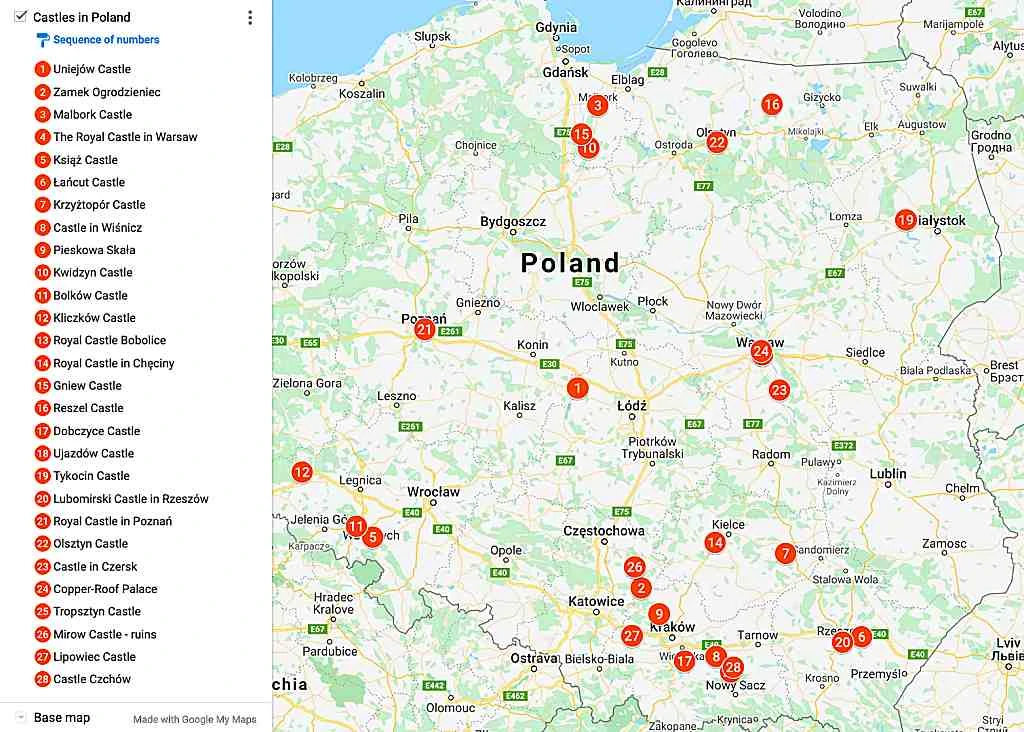
The Best 28 Castles to Visit in Poland
1. Uniejów Castle
Situated in the town of Uniejow in the Lodz Voivodeship region of central Poland lies the stunning and historical Uniejow Castle. Construction on this castle dates back to the year 1365, and it was not completed until the year 1365; it was built upon the site of a previously existing wooden fortress, which was destroyed in the year 1331 after it was demolished after the Teutonic Knights destroyed it.
Later, between the years 1525 and 1534, the castle was expanded, after a large fire demolished a large portion of the castle’s Gothic architectural features; at this time, the castle was also modernised, and it was also fortified.
Later, in the 17th century, the castle’s function as a stronghold with a military purpose ended, and the castle was transformed into a residence. In around the year 1836, the castle was given to the House of Toll, who were an Estonian family.
Where: Uniejow, Poland
When: 14th century
Open for visit: Yes, check here for more information.
2. Zamek Ogrodzieniec
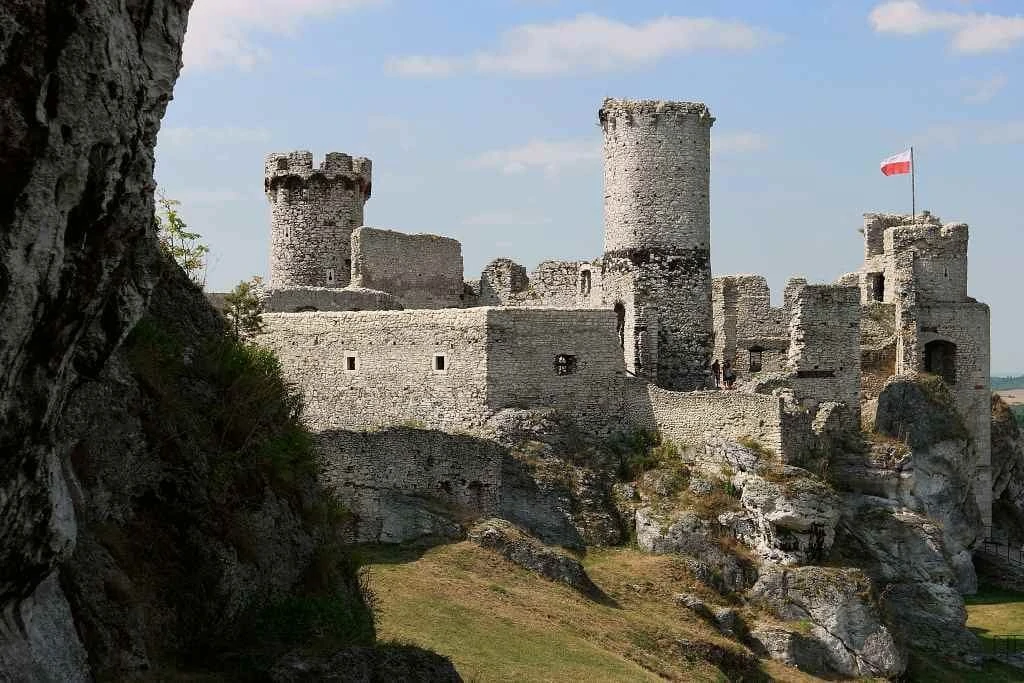
Situated in the luscious mountainous region of the Polish Jura, which is in the south-central part of the country, lies the breath-taking Zamek Ogrodzieniec, or Ogrodzieniec Castle.
The castle was first established at the turn of the 12th century under the reign of Boleslaus II Wrymouth. Later, in the middle of the 14th century, the old castle was replaced by a new, larger gothic castle that was built as a residence for the prominent Wlodek Sulima family; what was fascinating about this castle is that it was integrated into the surrounding natural scenery, giving it a truly unique and charming exterior.
Unfortunately, in the year 1702, half of the castle was burned down by the decree of Charles XII of Sweden, and it was never rebuilt. After the Second World War, the castle became nationalised, and a renovation project occurred between the years 1949 and 1973 to preserve the ruins and history.
Where: Polish Jura, Poland
When: 12th century
Open for visit: Yes, check here for more information.
3. Malbork Castle

Malbork Castle, or sometimes known as The Castle of the Teutonic Order in Malbork, is a fascinating historic castle that originated in the 13th century as a Teutonic Castle and fortress.
The castle’s history began by its construction by the Teutonic Knights, who were a prominent German Catholic religious order of crusaders; later in 1457, in the midst of the Thirteen Years’ War, the castle was sold to King Casimir IV of Poland, and it was transformed into a royal residence for the Polish monarchy.
One of the most charming things about Malbork Castle, and what attracts many visitors and tourists, is its impressive red brick exterior, and its quintessential medieval fortress style architecture; fascinatingly, it holds the title as the largest castle in the world by land area.
It is also a UNESCO World Heritage Site, and one of Poland’s official national Historic Monuments, as confirmed on the 16th September 1994. It is a hugely important monument for Polish heritage, and has so much history attached to it, spanning centuries.
Where: Malbork, Poland
When: 13th century
Open for visit: Yes, check here for more information.
4. The Royal Castle in Warsaw

Located in the bustling Polish city of Warsaw, lies the Royal Castle, which is an incredibly important castle with an expansive history. The castle and the surrounding complex began life as the residence for the Dukes of Mazovia, though at this point in time, the castle was far smaller than it is today, and made of much weaker materials.
Since the 16th century, the castle had been the seat of the Polish-Lithuanian Commonwealth, making it a very important and prestigious building and important cultural centre. In more recent history, after the invasion of Poland in the year 1939 by the Nazi Germans, the castle was nearly entirely burned and looted, taking with it many important features of history; again, in the year 1944, the castle was heavily damaged during the failed Warsaw Uprising.
The castle was reconstructed between the years 1971 and 1984 by the Civic Committee, so try and bring the castle back to its former glory; today, it is a UNESCO World Heritage Site, and one of the most iconic and recognisable Warsaw landmarks.
Where: Warsaw, Poland
When: Origins in the 14th century
Open for visit: Yes, check here for more information.
5. Książ Castle
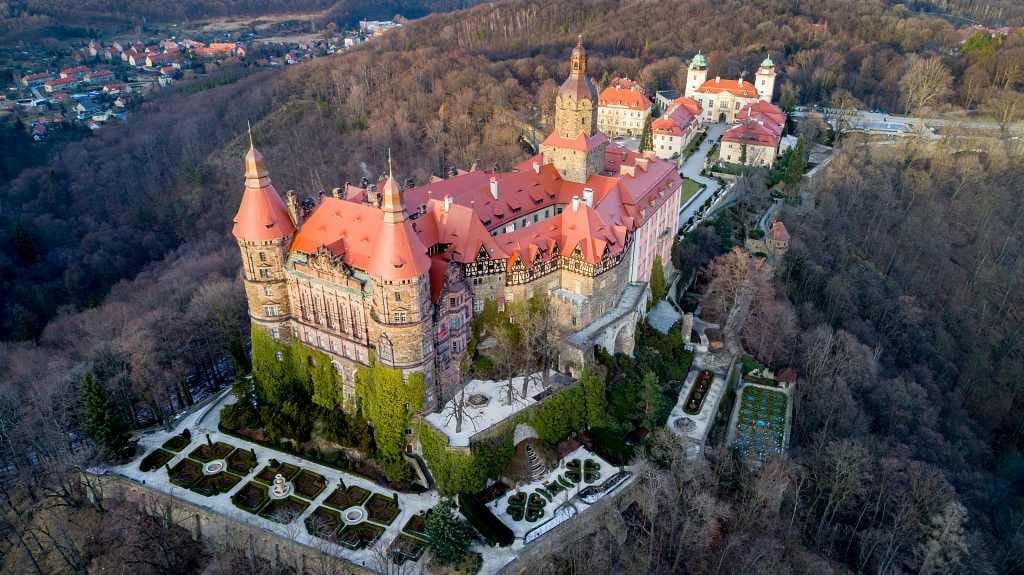
Situated in the Silesia region of Poland, in northern Walbrzych, lies the stunning Ksiaz Castle, or locally known as Zamek Ksiaz. Like many castles in Poland and Europe as a whole, an earlier castle existed at the site before the current one did; the Bohemian troops of King Ottokar II demolished the first fortress that existed on the site in the year 1263, and a new one was built between 1288 and 1292 by Bolko I the Strict, who was the Silesian duke.
In more recent history, the castle was besieged by the Nazi regime in the year 1944; later, after the war, the castle complex was converted into a recreation home, and was largely restored to return it back to its former glory.
Today, the castle is open to the public; it is a very popular tourist destination, for its elaborate designs, architectural features, bold ad vibrant colours, as well as a fascinating history.
Where: Walbrzych, Poland
When: 13th-century origins
Open for visit: Yes, check here for more information.
6. Łańcut Castle
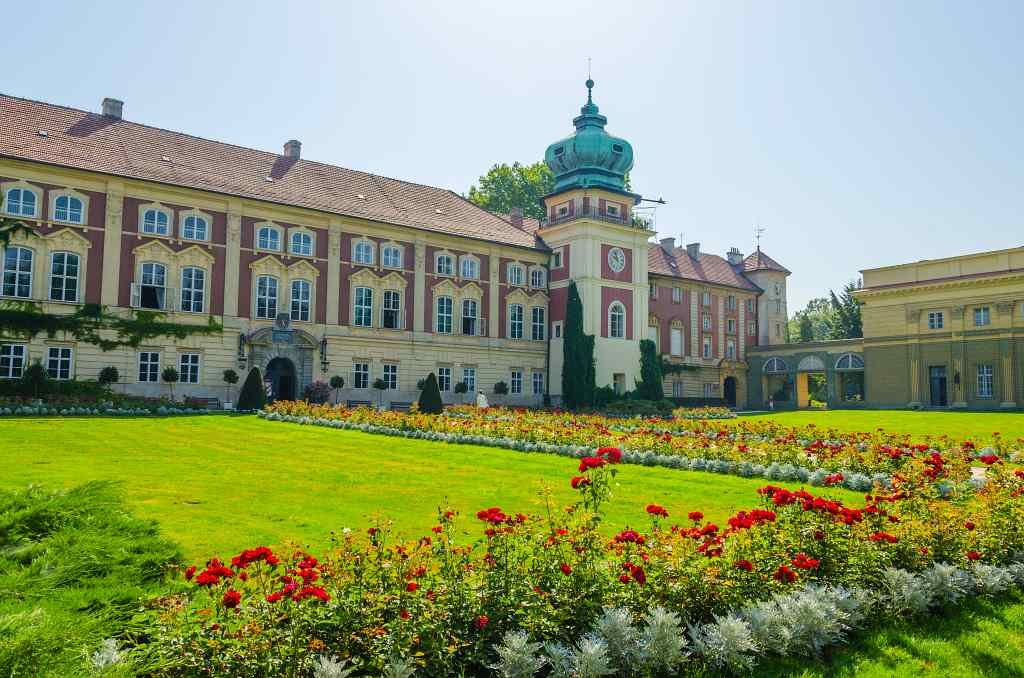
Lancut Castle is part of a larger complex of historic buildings, that are located in the town of Lancut in Poland. This castle was established in the second half of the 16th century, although there is a much earlier history attached to the site, before the castle was constructed; it dates back to the era of King Casimir III the Great, whereby the was resided in by the royal Jagiellonian Dynasty.
Later, in the 17th century, the castle that stands today was constructed, and it was built in the style of Polish Baroque architecture; the castle that existed earlier, was converted into a palace, with some incredibly grand and impressive features.
Today, many visitors are attracted to Lancut Castle for many reasons, including its expansive, varied and fascinating history, its incredibly architecture both externally, with its grand façade, and its even more impressive interiors, as well as its stunning gardens that envelop the complex. They are constructed in the English Landscape style, and are surrounded by a beautiful moat.
Where: Lancut, Poland
When: 16th century
Open for visit: Yes, check here for more information.
7. Krzyżtopór Castle
Nestled in the scenic Polish village of Ujazd, which is located in the Iwaniska commune in the Opatow County, lies the beautiful and historical Krzyztopor Castle.
Little is known about the origins of this castle, though there is documentation of the construction of the castle occurring in the year 1627. During the Swedish Invasion of Poland in the year 1655, the castle was sieged by Swedish troops, who took occupation of it until the year 1657.
The Swedes left the castle in a terrible state after their years of control, and it was left to decay, and no one rebuilt it. However, the western wing was still in good condition, and several noble families resided in this part of the castle over the centuries.
The castle was renovated by the Russians in the late 18th century, though it was ransacked again during the Second World War, and was not remodelled again until the year 1971.
Where: Ujazd, Poland
When: 17th century
Open for visit: Yes, check here for more information.
8. Castle in Wiśnicz
Wisnicz Castle, or otherwise known as Nowy Wisnicz Castle, is a stunning and historic castle located in the village of Stary Wisnicz, in Lesser Poland Voivodeship, in Poland.
The castle was constructed in the 16th century; in the year 1516, the castle was expanded by Piotr Kmita, and after he died in the year 1553, the castle fell into the hands of the Barzow in 1566.
In the 19th century, specifically the year 1831, the castle was destroyed by a large fire, and fell into disrepair; the castle was later acquired by Professor Maurycy Straszewski of the Lubomirski Ancestral Federation, and began the renovation of the castle.
However, during the Second World War, the castle was taken by the stateand construction was taken over by Alfred Majewski in 1949. Today, many visitors are drawn to the castles history, and the many legends and mysteries that are attached to it
Where: Stary Wisnicz, Poland
When: 16th century
Open for visit: Yes, check here for more information.
9. Pieskowa Skała
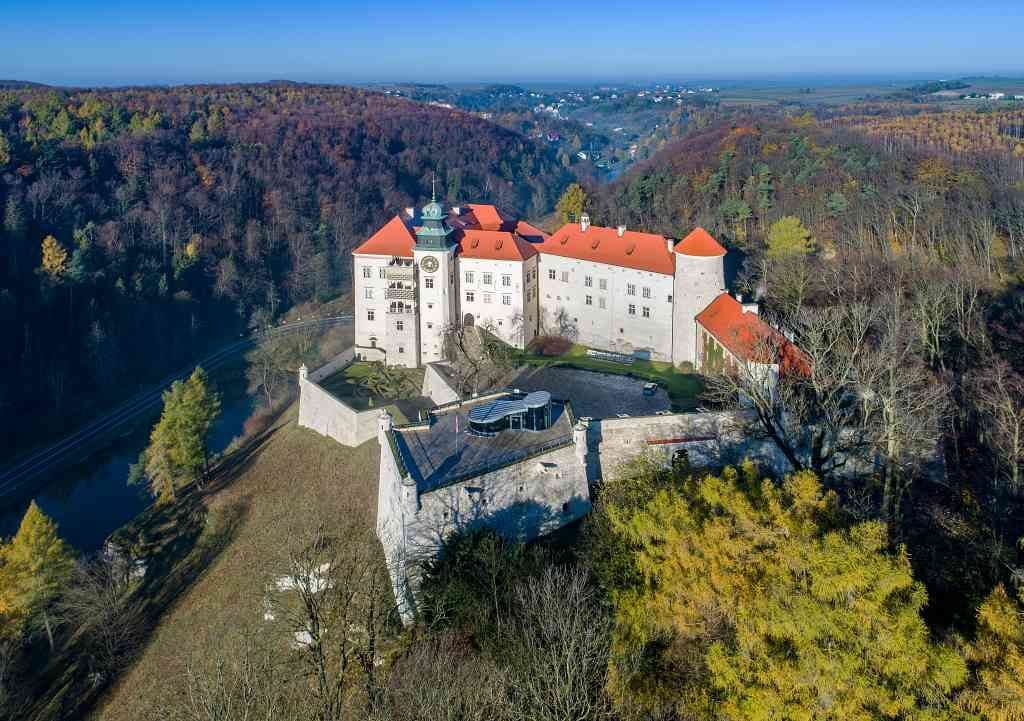
Pieskowa Skala Castle, which translates into Polish as ‘Little Dog’s Rock’, is a stunning castle that is perched upon a limestone cliff in the valley of river Pradnik in the Ojcow National Park in Poland, which is not too far from the hustle and bustle of the city of Krakow.
The history of the castle dates back to the first half of the 14th century, and was built by the decree of King Casimir III the Great, and it is part of a series of fortified castles, that stem along the Trail of the Eagle’s Nests, which is located upon the highland plane of the Polish Jura.
In the year 1377, the castle was renovated by King Louis I of Hungary, and many critical additions were added.
Over the centuries that the castle has existed, it has changed hands of ownership many times, and has also changed its overall style and appearance, depending on the architectural styles, and needs of the time. Today, the castle is open to the public, and it stands as a symbol of Polish culture and heritage.
Where: Suloszowa, Poland
When: 14th century
Open for visit: Yes, check here for more information.
10. Kwidzyn Castle
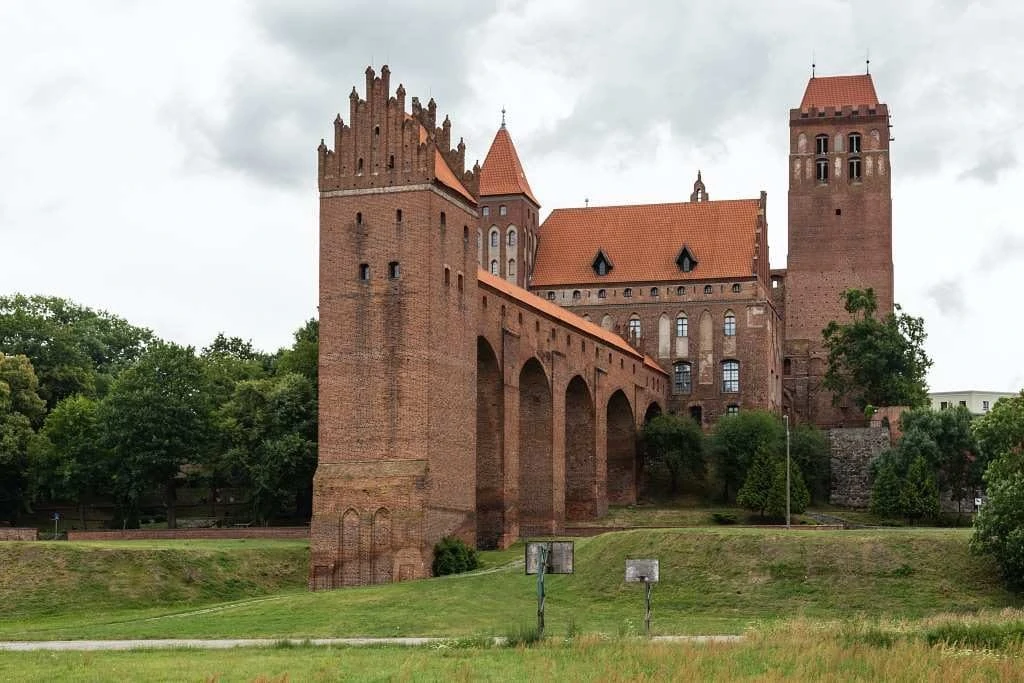
One of the most unique, easily recognisable, and architecturally impressive castles in the entirety of Poland, is the beautiful Kwidzyn Castle, which is located in the town of Kwidzyn, in the north of the country.
The castle was originally built in the year 1233, and represents the quintessential style of the Teutonic Knights’ castles architecture. During the 14th century, the castle functioned as a chapter house for the Pomesanians, who has rebuilt it, and added key features, such as a square courtyard and square keeps.
In the midst of the Deluge campaigns that occurred in the 17th century, the castle was sadly partially demolished by the Swedes, and was again later deconstructed by the deree of the Prussian authorities in the 18th century.
It was not until the year 1855, that the castle was reconstructed, in an attempt to return it to its former medieval glory; this was completed in the year 1875, and is today open to the public.
Where: Kwidzyn, Poland
When: 1233
Open for visit: Yes, check here for more information.
11. Bolków Castle
Located upon a hill, in the town of Bolkow, lies the gorgeous and historical Bolkow Castle. The first mention of the castle dates back to the year 1277, during the reign of the Duke of Legnica, Boleslaw II Rogatka.
The way in which the castle is shaped today dates back to the 16th century, where it was constructed by the prominent Silesian architect, Jakub Parr, who styled the castle alongside the principles of the Renaissance architectural style, that was heavily prominent at the time.
The castle occupied an enormous area of 7600 square meters, meaning it was one of the largest castles in the entirety of Silesia. Later, in the year 1703, the castle was purchased by Cistercian monks from Krzeszow. Today, the castle is in a ruined state, but it is nonetheless a stunning complex, and gives visitors a true insight into the past.
Where: Bolkow, Poland
When: 1277
Open for visit: Yes, check here for more information.
12. Kliczków Castle
Located in the Polish village of Kliczkow lies the gorgeous and historic Kliczkow Castle. The castle was originally established in the year 1297, with the purpose of being a border fortress at the river Kwisa; it was founded by Duke Bolko I of Jawor.
In the next century, in the year 1391, the castle transferred hands to the prominent Rechenberg family, who were from Saxony; this family had control of the castle for nearly 300 years. In the year 1585, the main building was constructed, and itw was built in the style of the Renaissance, which was incredibly prominent at the time.
The castle has also had many famous and noble visitors throughout the centuries, including in the year 1611, where King Matthias of Bohemia stayed there.
In more recent times, the castle amazingly survived the brutality of the Second World War with practically no damage to it, however, in 1949, a large fire destroyed many parts of the castle, including the servants’ quarters and the depot.
Where: Kliczkow, Poland
When: 13th century
Open for visit: Yes, it is now a hotel. Check here for more information.
13. Royal Castle Bobolice
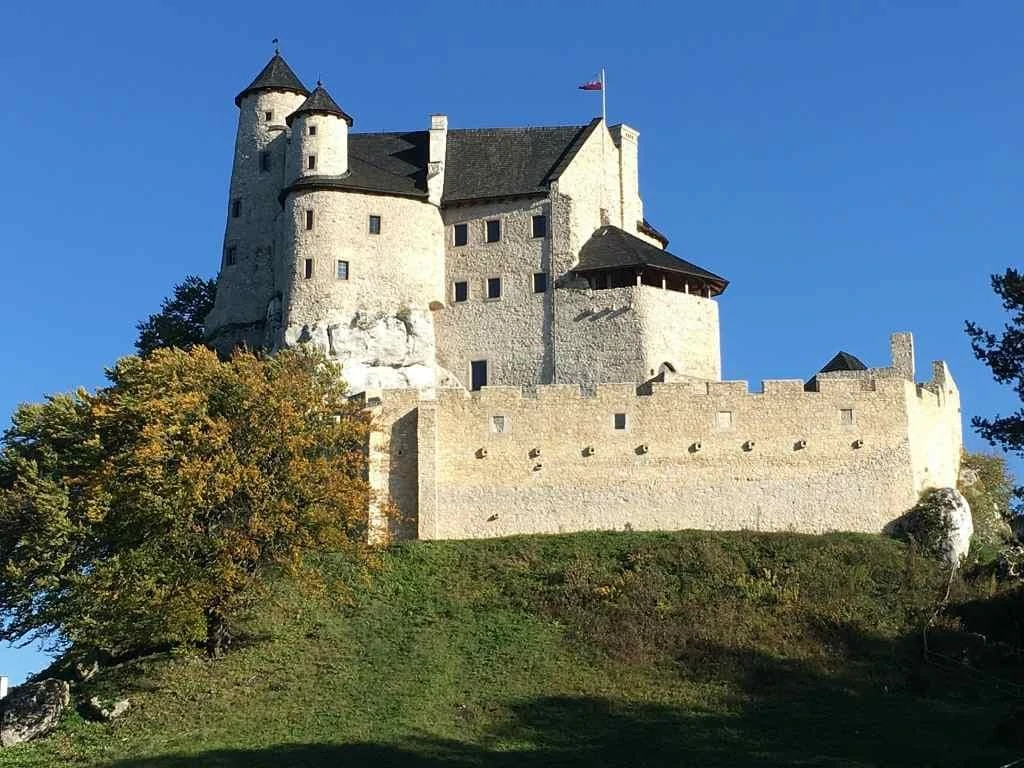
Situated in the Polish village of Bobolice, lies the gorgeous Bobolice Castle; it is located in the beautiful semi-mountainous highland region of the country, called the Polish Jura.
Like many historic Polish castles, Bobolice Castle was constructed by the King Casimir III the Great, and it was built in the middle of the 14th century; it is believed to have been built on the same site of an earlier existing castle, likely to be made of wood.
The castle was built as part of a string of defensive fortresses that were built to protect the western border of Poland, along the side of Silesia. In more recent times, in the 19th century, an enormous amount of treasure was discovered in the cellars of the castle, though little is known about what happened afterwards.
Today, the castle belongs to the Lasecki family, who made the decision to rebuild the castle in the year 1999; it is also partially open to the public to visit.
Where: Bobolice, Poland
When: 14th century
Open for visit: yes, check here for more information.
14. Royal Castle in Chęciny
Situated in the Polish town of Checiny lies the beautiful Royal Castle of Checiny. It is believed that construction on the original fortress began in the late 13th century, though little is known for certain.
In the year 1306, the Archbishop of Krakow, Jan Muskata was gifted the castle from King Wladyslaw I the Elbow-High. During the Middle Ages, the castle played a critical military role, and was heavily intertwined with the Polish monarchy. It was enlarged by King Casimir III the Great after the death of Wladyslaw, and it changed its role to that of a royal residence, primarily.
Later, in the 16th century, the castle fell into disrepair; it was eventually destroyed and burned down, upon the decree of the parliament. Later, in the 18th century, the medieval walls of the castle began to be used s building material for the villagers in the region.
Where: Checiny, Poland
When: 13th century
Open for visit: Yes, check here for more information.
15. Gniew Castle

Situated in the town of Gniew in Poland, lies the beautiful red brick Gniew Castle, which is notable for being a former castle of the Teutonic Order, which were a historic Catholic religious order with military roots; it is not entirely certain on the exact date in which the castle was constructed, but it is believed to have been built after the year 1290.
In the year 1466, under the Second Peace of Thorn, the castle became Polish, and it was granted to Duke Dan de Jani of the Clan of Ostoja, the voivode of Pomerania by the King.
Throughout the centuries that the castle has existed, it has changed shape and architectural style depending on the style and needs of the time; in the late 20th century, the castle was restored to its former glory, and is today a popular site for tourists and visitors.
Where: Gniew, Poland
When: 13th century
Open for visit: Yes.
16. Reszel Castle
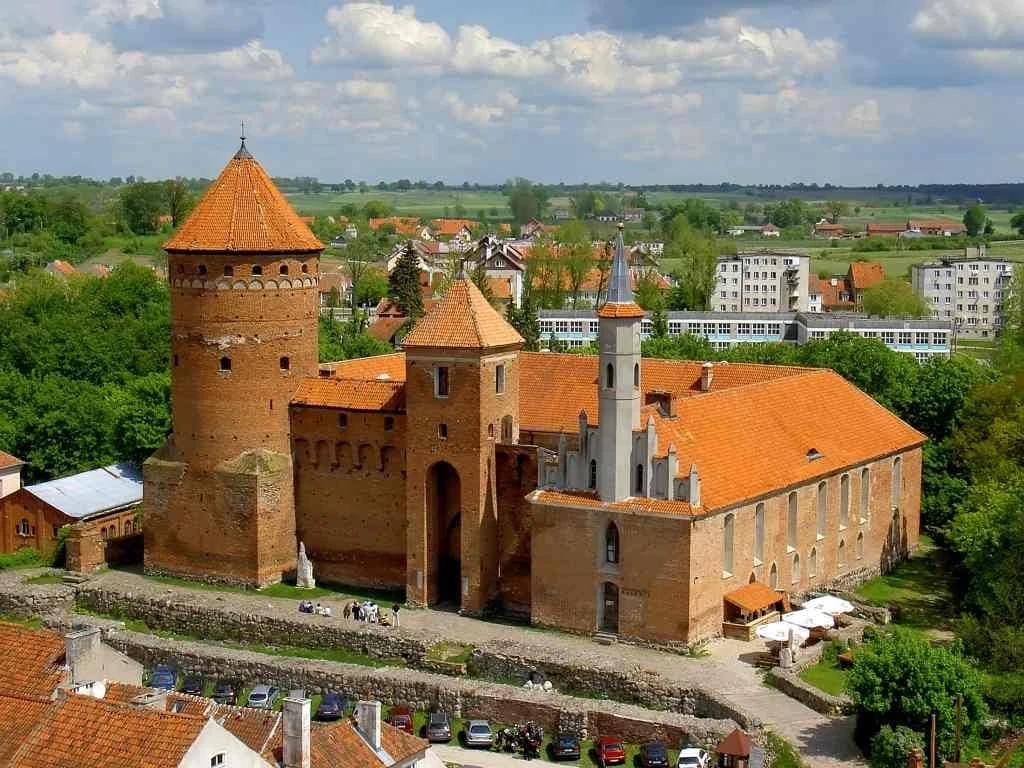
Located in the Polish town of Reszel, and upon the shores of the river Sajna, lies the beautiful and historical Reszel Castle.
The castle was initially built by the Bishop of Warmia, Jan of Misnia, though the first residence at the castle were actually the Teutonic Knights; this castle was often looted and attacked by Polish and Teutonic troops.
In the year 1780, a section of the castle was transformed into a prison, and between the years 1806 and 1807, a large and catastrophic fire demolished the original medieval castle; in the year 1822, the castle was then reconstructed, bringing with it a new, Lutheran Church.
Today, the castle houses a museum, a hotel and a restaurant, and is open to the public to visit; the castle and the town are also popular places to visit for tourists.
Where: Reszel, Poland
When: 14th century
Open for visit: Yes, check here for more information.
17. Dobczyce Castle
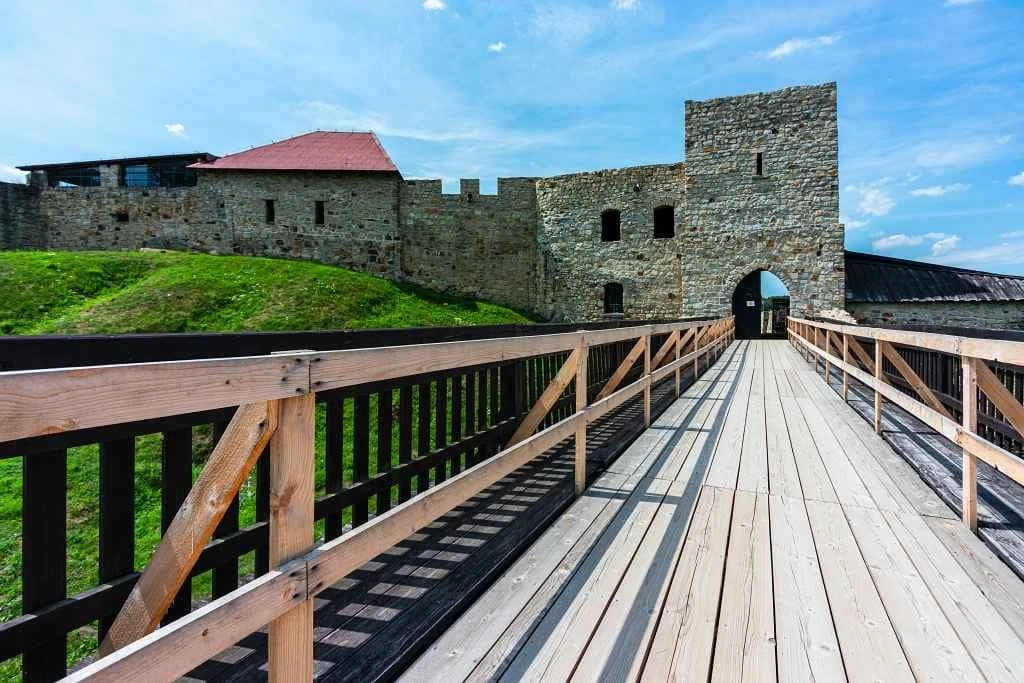
Situated in the southern Polish tower of Dobczyce, in the Lesser Poland Voivodeship region of the country, lies the gorgeous and fascinating Dobczyce Castle; the castle is dramatically perched upon a large, rocky hill, that towers above the scenic Lake Dobczyce.
The first mention of the castle dates back to the year 1362, though the castle is known to have been fortified since the year 1311. Later, in the year 1398, the castle became the residence for King Wladyslaw II Jagiello and his wife, Jadwiga.
During the 16th century, the castle was occupied by the noble Lubomirski family, who ruled the castle from 1585; between the years 1593 and 1594, they reconstructed the Gothic fortress into a contemporary Renaissance abode, whilst also adding key features, such as the chapel, clock tower and the fountain.
Where: Dobczyce, Poland
When: 14th century
Open for visit: Yes, check here for more information.
18. Ujazdów Castle
Located in the Ujazdow district, in Warsaw, Poland, lies the gorgeous historical castle, Ujazdow Castle. During the 13th century, the original castle was constructed by the Dukes of Mazovia, who later transferred their court to another location in Warsaw, meaning that the castle fell into disrepair.
Centuries later, in the 16th century, a large wooden manor house was constructed at the site, for Queen Bona Sforza, and this castle was later merged with the original ruins of the Mazovian castle.
Throughout the following centuries, the castle changed hands on many different occasions, and also changed its overall style many times as well; currently, the castle holds a Centre for Contemporary Art, which exhibits an array of different collections and concerts, as well as occasionally holding educational workshops.
This centre, as well as the heritage of the castle, is a key reason why tourists and visitors are attracted to the Ujazdow Castle.
Where: Warsaw, Poland
When: 13th century
Open for visit: Yes, check here for more information.
19. Tykocin Castle
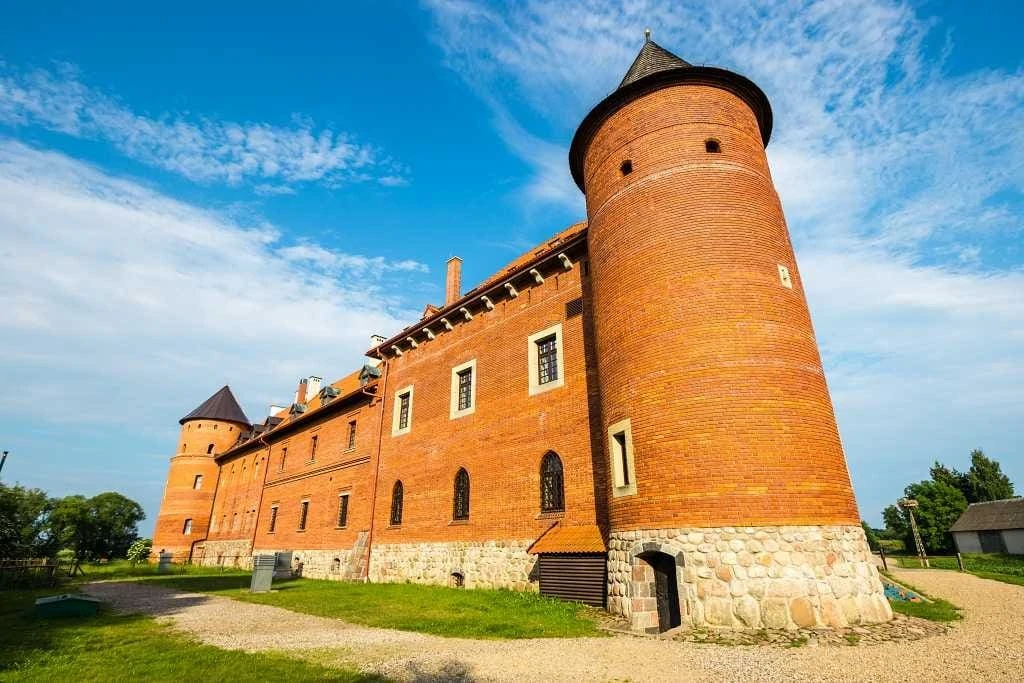
The beautiful Tykocin Royal Castle is a stunning Gothic Revival style castle in the Polish town of Tykocin, that is located near to the river Narew. The castle’s history dates back to the year 1433 for a Lithuanian noble, named Jonas Gostautas, voivode of Trakai and Vilnius, in the place of an original wooden fortress.
The castle was largely expanded after it fell into the hands of King Sigismund II Augustus in the 1560s, after the death of the previous owner. In this time period, the castle was a royal residence with an incredibly treasury.
Later, in the 17th century, the castle was rebuilt, and modernised. In the year 1734, the castle was entirely destroyed by a castle by a fire, and after this, no one inhabited it; again, in 1771, the small amount that remained of the castle was ruined by a flood. Today, the castle is open to the public and has a hotel and restaurant.
Where: Tykocin, Poland
When: 1433
Open for visit: Yes, check here for more information.
20. Lubomirski Castle in Rzeszów
Situated in the town of Rzeszow lies the beautiful Rezeszow Castle, or sometimes known as Lubomirski Castle.
The first castle on the site was constructed in the year 1458, though little is known about the history of this early fortress; at the end of the 16th century, a new motte and bailey castle was constructed nearby to the earlier castle, and was constructed by Mikolaj Spytek Ligeza, who was a Polish-Lithuanian noble.
The castle was later expanded in the year 1620, and it was transformed into a ‘Palazzo in Fortezza’, and was built very much in line with contemporary Renaissance principles. Seventeen years later, the castle was placed under the control of the House of Lubomirski, who were a prominent Polish family.
Today, there are only a few original elements left, including the gatehouse and the bastion fortifications, as during the turn of the 20th century, the castle was largely deconstructed, as it was in a very bad condition.
Where: Rzeszow, Poland
When: 16th century
Open for visit: Yes, check here for more information.
21. Royal Castle in Poznań
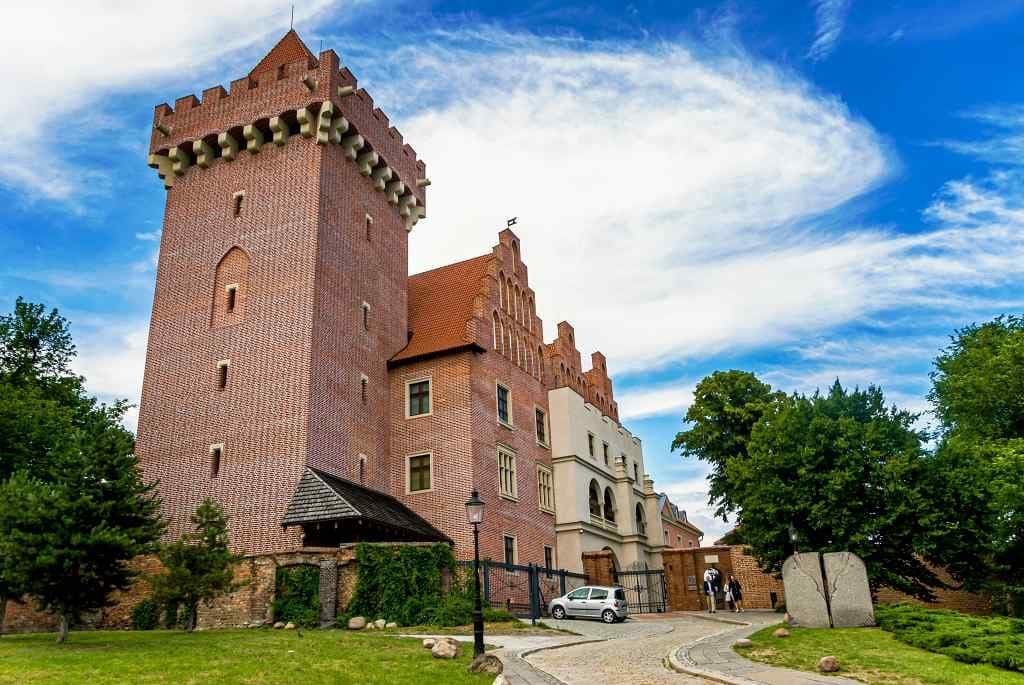
Located in the vibrant Polish city of Poznan, that is incredibly rich with heritage and culture, lies the Royal Castle.
The castle is believed to have been built in the year 1249, and it is likely built by Przemysl I, who was the Duke of Poland at the time; the site did not emulate the form of a traditional castle at this point, but was rather a brick tower with a well inside.
At the end of the 13th century, the son of Przemysl I, Przemysl II made the decision to construct a far larger castle, that was more regal in nature and design; it was finished in the year 1337.
Throughout the centuries, the castle was demolished and rebuilt on several different occasions, for very different reasons, as it was often the target during many different military conflicts and battles throughout the years.
In more recent years, in December 2010, a total renovation of the heavily demolished parts of the castle, in order to bring it back to its former Renaissance glory.
Where: Poznan, Poland
When: 13th century
Open for visit: Yes, check here for more information.
22. Olsztyn Castle

Olsztyn Castle, or as it is sometimes known as, The Castle of Warmian Bishops in Olsztyn, is a historic 14th century Gothic castle that is located in the scenic Polish city of Olsztyn.
The castle was established between the years 1346 and 1353, but at this point it was no where near the size that it would end up being in later years; at this point, it consisted of a wing and a courtyard.
During the Middle Ages, the castle played a predominantly military function, and was at the centre of many famous historical battles and conflicts, including the Battle of Grunwald, the Polish-Teutonic Wars, and the Thirteen Years’ War.
During the 18th century, the castle’s military role slowly faded out, and the castle was converted to a palace, where new wings and extensions were added; it was visited by many noble and regal guests, such as Prince-Bishop Ignacy Krasicki in 1779. Today, the castle is open to the public, and a museum is housed on the site.
Where: Olsztyn, Poland
When: 14th century
Open for visit: Yes, check here for more information.
23. Castle in Czersk
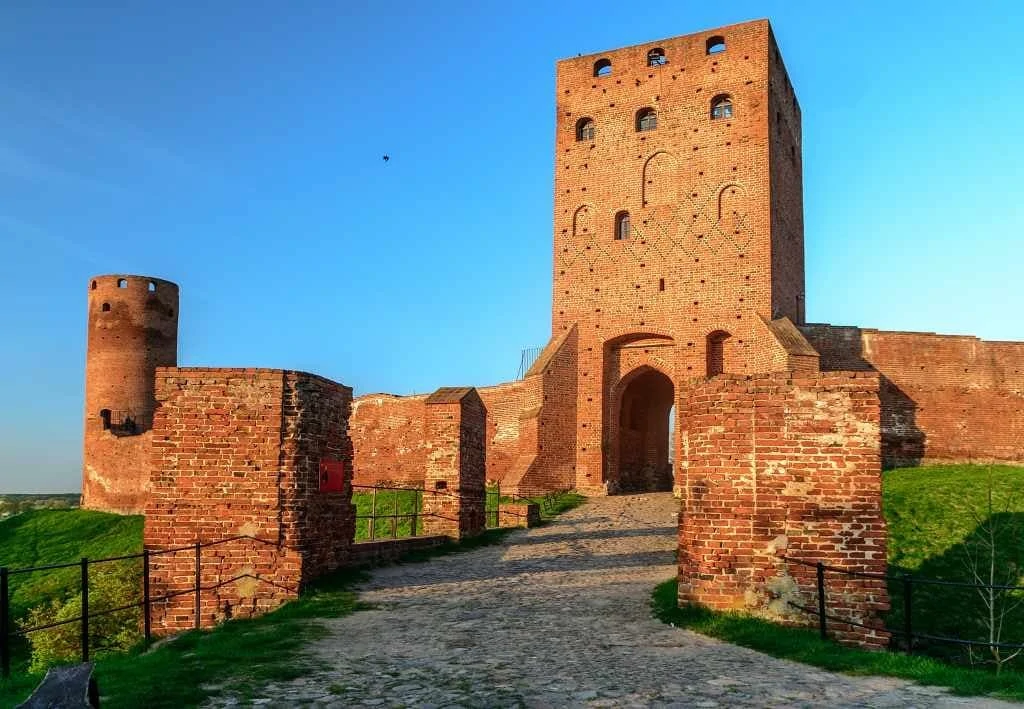
Situated in the Polish town of Czersk, which is approximately 36 kilometres south of the hustle and bustle of the city of Warsaw, lies the historical Gothic Czersk Castle, which makes for a perfect day trip from the city.
The castle was originally built between the years 1388 and 1410 by the Masovian dukes, specifically Duke Janusz I; initially, this medieval castle consisted of three towers, whereby one of which functioned as the main gate house. Sadly, the castle was partially demolished during the war with the Swedes, in the year 1656.
Later, between the years 1762 and 1766, the castle underwent a thorough reconstruction and renovation, upon the demand of Marszalek Franciszek Bielinski.
However, later, in the midst of the Prussian Partition, the Prussian leader ordered that the castle’s defence walls be destroyed and diminishing the castle’s military strength. Since this point, the castle fell into disrepair; it is open to the public today.
Where: Czersk, Poland
When: 14th century
Open for visit: Yes, check here for more information.
24. Copper-Roof Palace
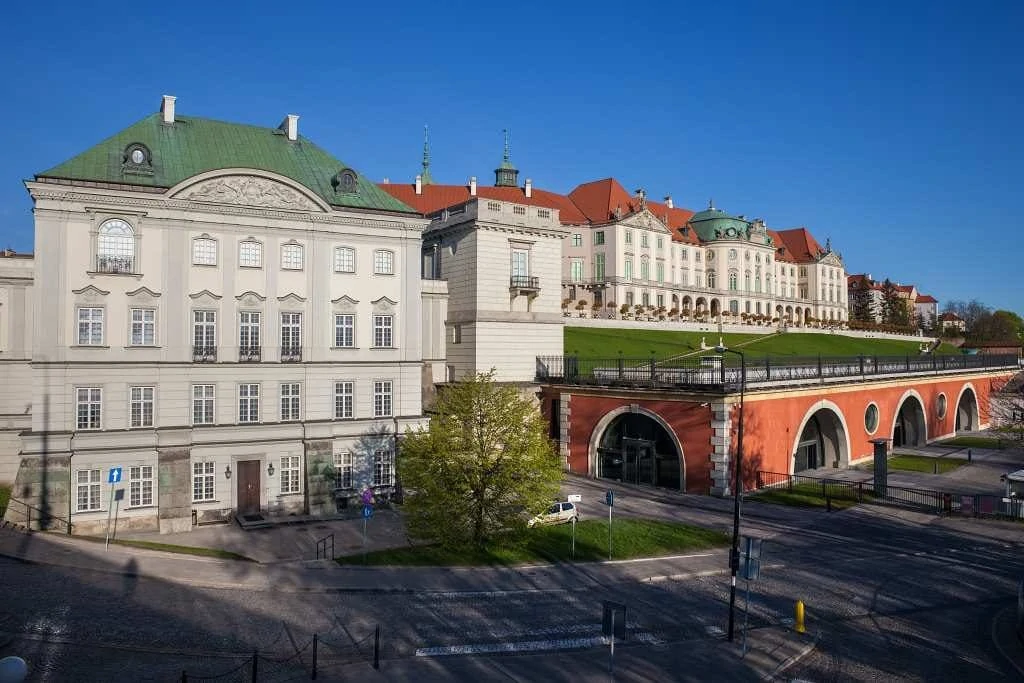
Located in the bustling and vibrant city of Warsaw, lies the Copper-Roof Palace, which is a magnificent 18th century palace with a fascinating past; the castle gets its name from the enormous copper roof that sits upon the wonderful architecture below, which was a very unique stylistic feature during its time of construction.
Like many European castles, an earlier castle existed at the site before the current one came to be; in this case, an early castle was built between the years 1651 and 1656, though it was demolished the follow year by the army of George II Rakoczi, before being entirely rebuilt between 1698 and 1701, for the Polish nobleman, Jerzy Dominik Lubomirski.
In the year 1720, the castle was rebuilt and added to, and the interiors were adorned with rococo artwork, which was incredibly popular during this time. Sadly, the palace was intentionally burned in the year 1944 by Germans, and was reconstructed between the years 1948 and 1949, in the style of the 18th century.
Where: Warsaw, Poland
When: 18th century
Open for visit: Yes, check here for more information.
25. Tropsztyn Castle
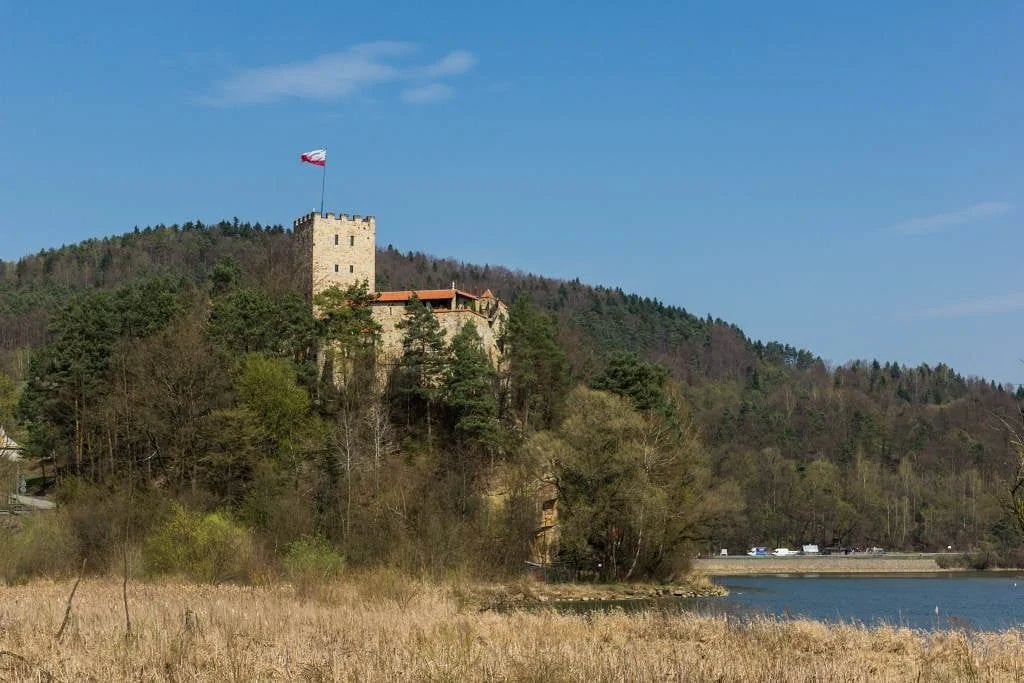
Tropsztyn Castle is part of a string of thirteen medieval castles, known as the Dunajec river castles, that were built along the Dunajec river in southern Lesser Poland; the purpose of these castles was to defend the border between the Kingdom of Poland and the Kingdom of Hungary, as well as critical trading routs that ran along the river.
One of the most stunning and impressive of these ruined castles is the Tropsztyn Castle which is believed to have been built at the turn of the 13th century by the Osmiorog family, who owned the castles for over 300 years.
During the 16th century, the castle’s purpose shifted to that of a hide-out for highwaymen, after being partially destroyed around the year 1574. The castle was left ruined for centuries, until the year 1863, where the historian Szczesny Morawski carried out key archaeological excavations on the site; there are lots of mysteries and legends attached to the site and its ruins, and visitors are attracted to the magical nature of it.
Where: Dunajec River, Poland
When: 13th century
Open for visit: Yes, check here for more information.
26. Mirow Castle – ruins
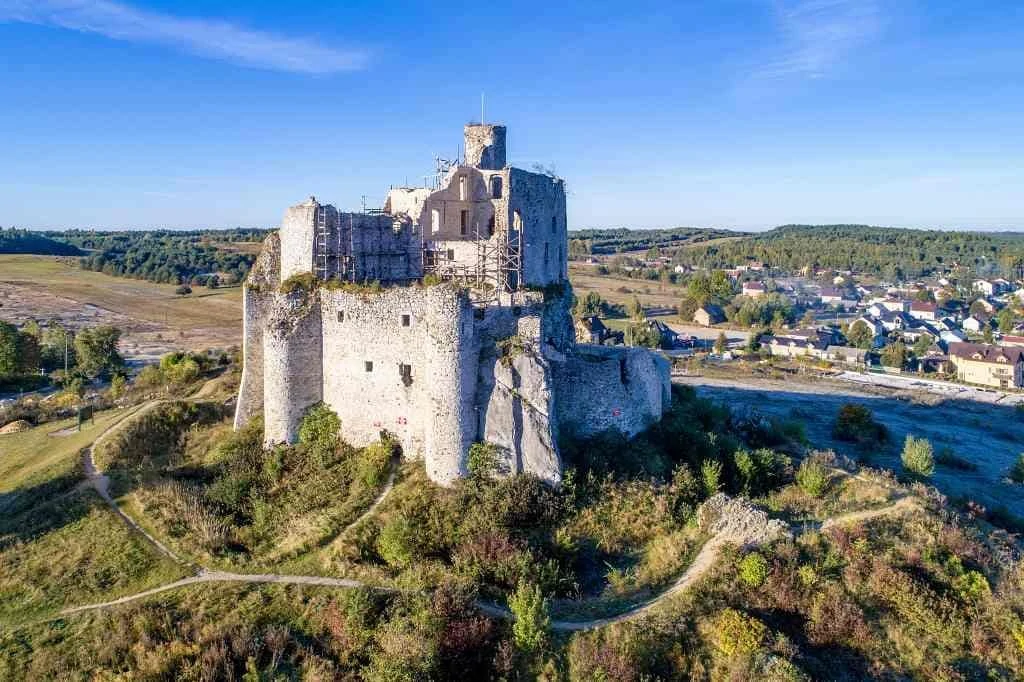
Situated in the beautiful Polish village of Mirow, in the Silesian Voivodeship region of Southern Poland, lies the stunning ruins of Mirow Castle.
Construction of this castle dates back to the 14th century, and had a primary role of being a defensive tower, guarding key trading routes and being a residence for noble visitors and royalty.
Mirow Castle has changed hands of ownership on several different occasions, who each brought along new additions and extensions, depending on their individual needs.
However, the castle was finally left to be abandoned in the year 1787, and it has been a ruin ever since; although little is known about the history of Mirow Castle, it is nonetheless a fascinating place to visit, and is popular with tourists.
Where: Mirow, Poland
When: 14th century
Open for visit: Yes
27. Lipowiec Castle
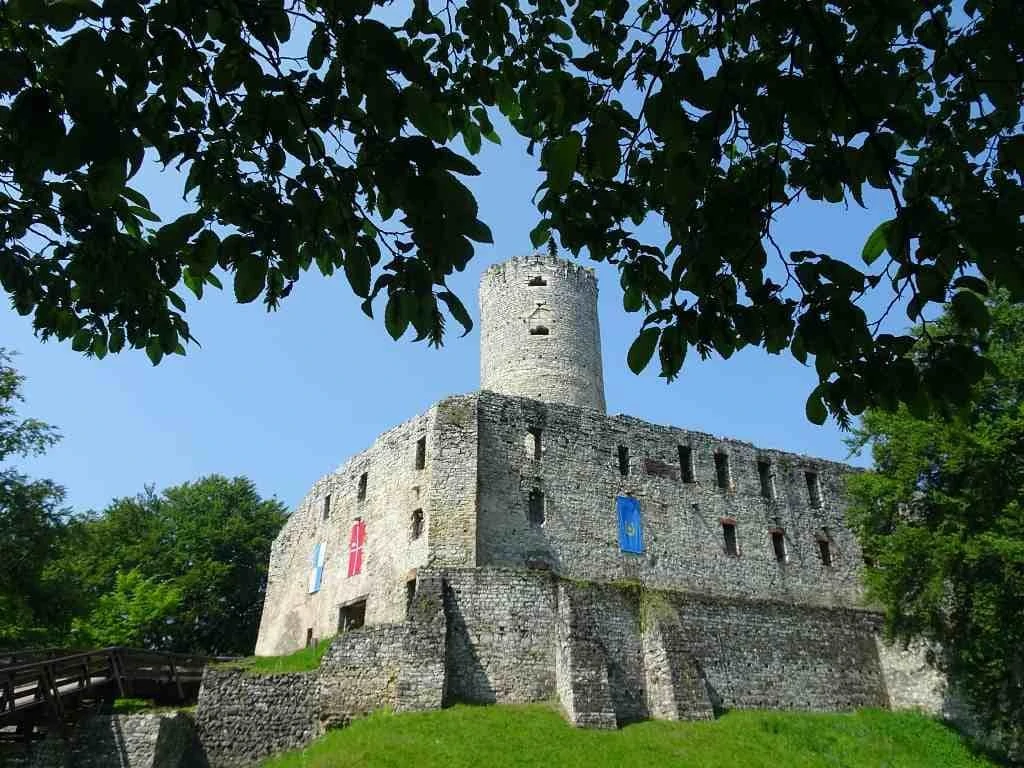
Situated in the small but scenic Polish village of Babice in the Chrzanow County of the country, lies the beautiful Lipowiec Castle. The first mention of the castle dates back to the 13th century, after it was purchased by the Krakow Bishop, Prandota; it is known that the castle belonged to the bishop Jan Muskata in the year 1295, at which time the castle was modernised and fortified, and renovated into a large stone structure.
During the 15th century, the castle took its present shape, as was developed by the architects Wojciech Jastrzebiec, and Zbigniew Olesnicki; since the end of the 15th century, the castle was used primarily as a prison for ecclesiastical offenders.
In the 17th century, a large fire resulted in the decline of the castle; between the years 1655 and 1657, during the Swedish deluge, it was burned down again, and left to abandonment every since. Today, it is open to the general public, and it is a very popular site for visitors.
Where: Babice, Poland
When: 13th century
Open for visit: Yes, check here for more information.
28. Castle Czchów
Castle Czchow is a beautiful ruined Romanesque style castle that is located in the small town of Czchow in the Lesser Poland region of the country.
The castle is located upon a hill, that is known as the Keep on the Dunajec, or Baszta nad Dunajcem; it was built upon this site for its role as a watchtower and defensive structure, which gave it a key position of looking over the surrounding landscape.
This is a great castle to visit for couples, especially in the early evening or at sunset, as the silhouette of the castle and the surrounding scenery is incredibly romantic, and the history feels very much alive today.
The castle is open to the public, and is a very popular tourist site, as the ruins are incredibly well-preserved for their age.
Where: Czchow, Poland
When: 13th-14th century
Open for visit: Yes, check here for more information.

